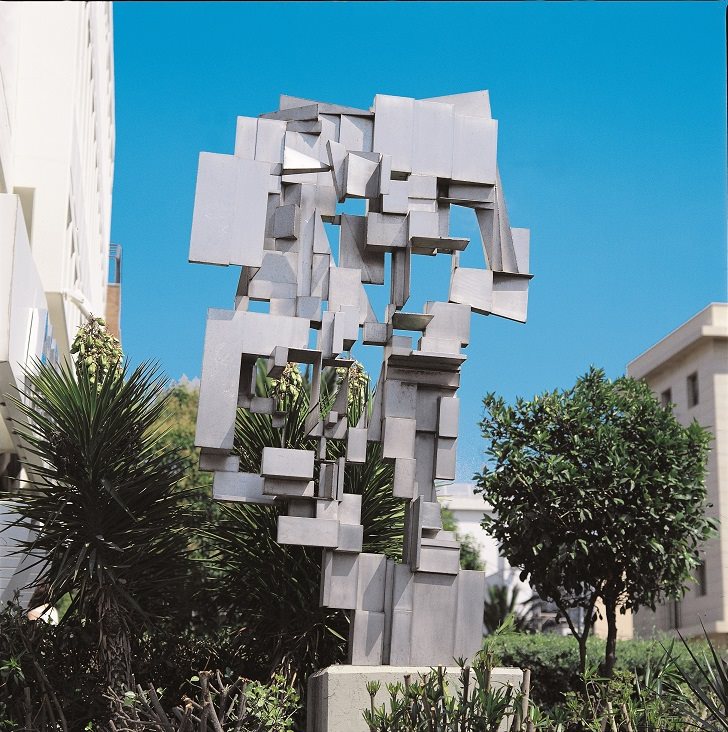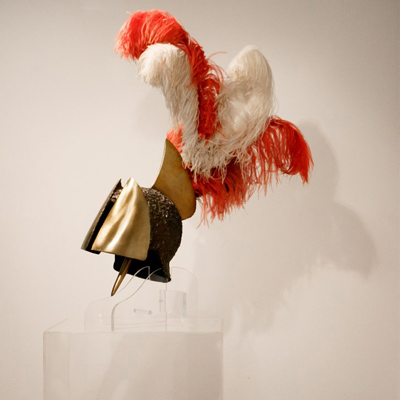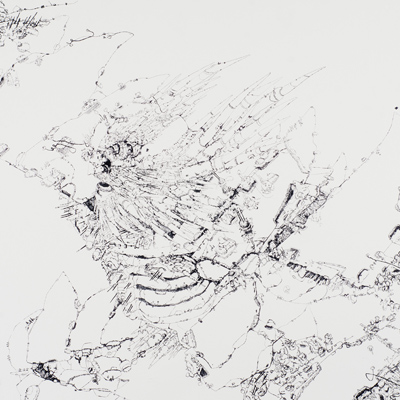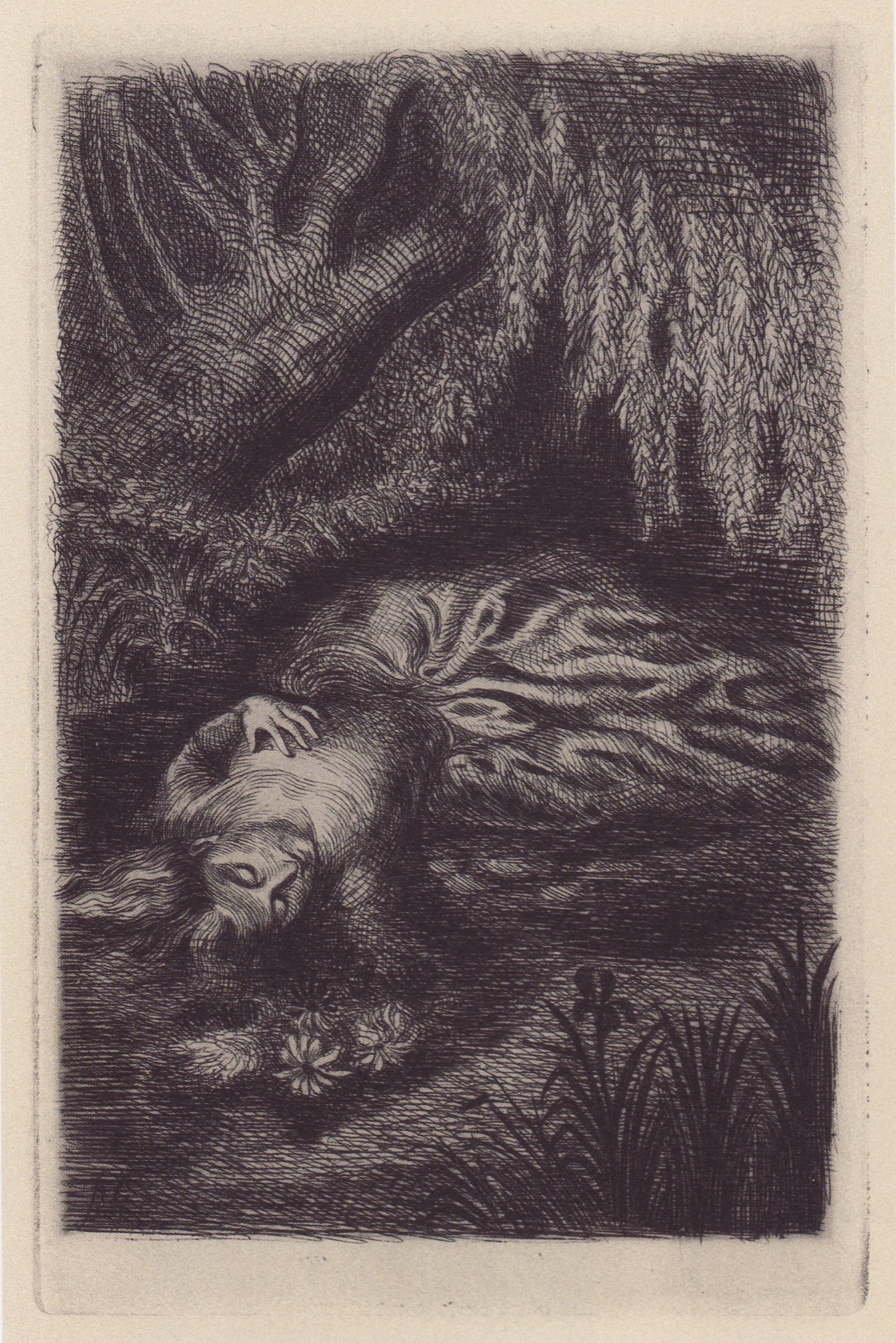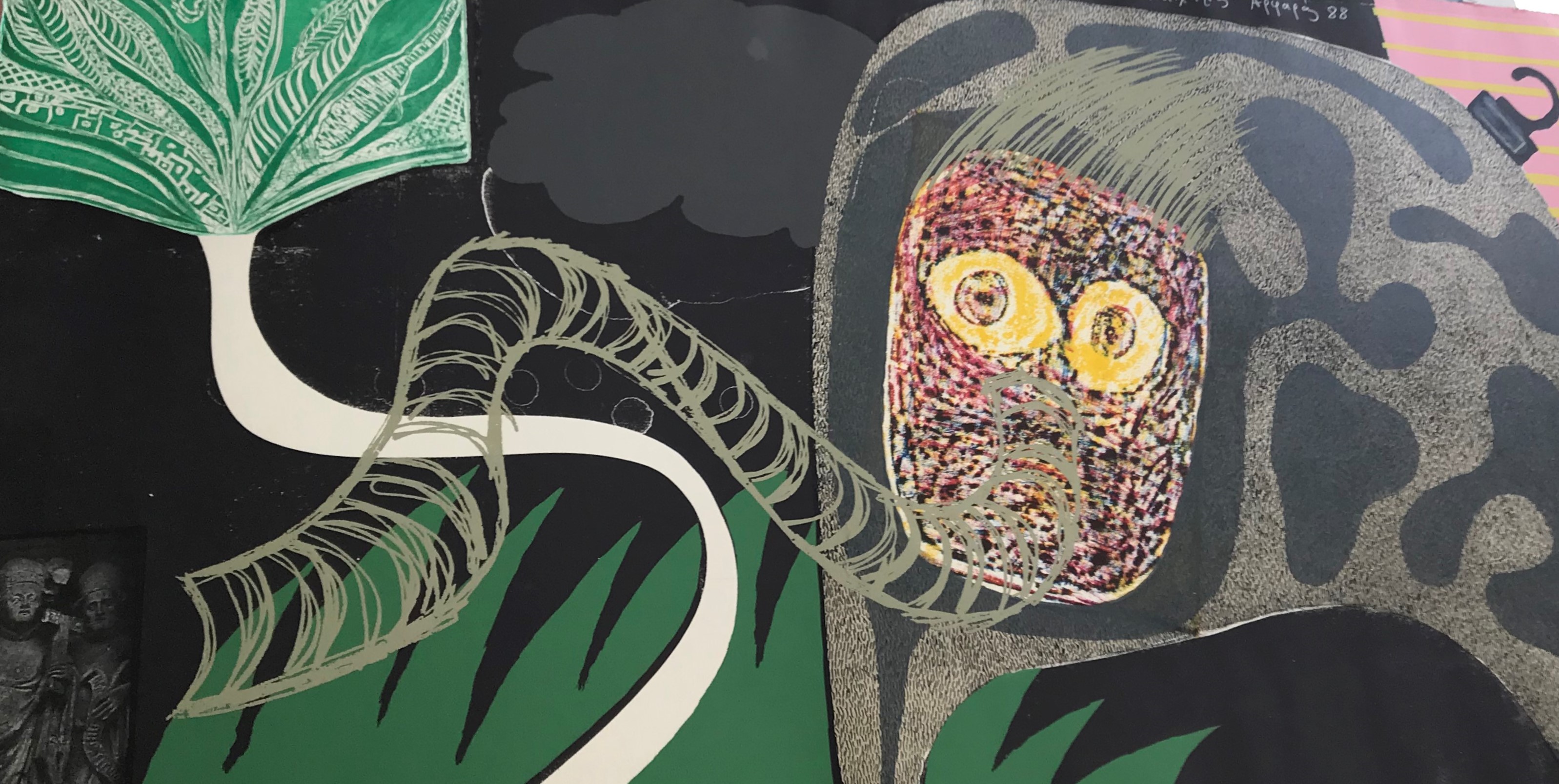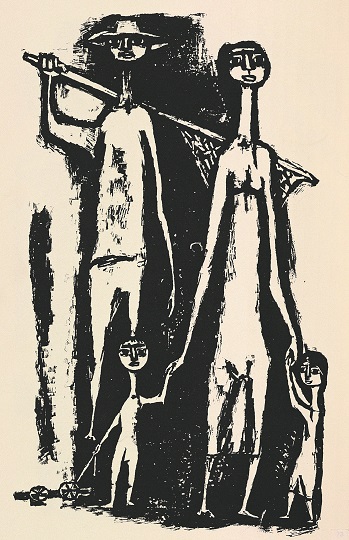George Zongolopoulos, Olive Tree
The Olive Tree by George Zongolopoulos is an outdoor sculpture. It has intensely abstract and cubist elements, and is in a direct dialogue with the natural environment. The piece summons to mind the image of a tree, with its trunk and foliage.
A public sculpture
The Olive Tree adorns the outdoor area of the Alpha Bank branch in Psychiko, on Kifisias Avenue. It is representative of George Zongolopoulos’ interest in public and outdoor sculpture.
Chronologically, it is part of a group of works that the sculptor created from 1969 onwards. It was during that period that Zongolopoulos began experimenting with structure and natural light.
The Olive Tree among the garden plants
The piece is mounted on a high concrete base. The aim is for it to project among and over the plants of the small garden surrounding the Bank branch.
This serves as a different representation of nature and a variation on the familiar natural environment.
Abstraction, cubism and the role of nature
The Olive Tree is a sculpture with abstract and cubist elements. The structure of the metal is resemblant of the structure of a tree, with its trunk and foliage. The metal volume seems weightless owing to the openings between its various parts, and the play of light and shadow they create.
Nature is not merely the theme of the piece. It is a key component, without which the sculpture would lose its meaning. Through the graduations of light, volume and form, the sculpture offers a different visual result, depending on the weather and time of day. This element is also observed in other works by the same artist.
His life in a nutshell
George Zongolopoulos (1903-2004) was born in Athens. He studied Painting at the Athens School of Fine Arts (1924-1930) under Thomas Thomopoulos.
Between 1930-1938 he worked at the architecture department of the Ministry of Education. There he mostly studied temples, museums and school complexes. He resigned from his post to dedicate himself to sculpture.
In 2004 he established the George Zongolopoulos Foundation. He left a large part of his work to the Foundation.
Artistic influences
In 1937 Zongolopoulos travelled to Paris and became acquainted with the work of French sculptor Charles Despiau. In 1949, on a French Government scholarship, he continued his studies in Paris, under Marcel Gimond.
In 1952 he moved to Italy and specialised in copper casting techniques on a scholarship from the State Scholarships Foundation of Greece. He also studied the works of Renaissance artists, such as Michelangelo, Andrea Pisano and Donatello. It was then that he turned from realism to abstraction, which distinguishes a large part of his work.
Zongolopoulos was also significantly influenced by the cubist movement, which is typified by bold geometric shapes. The sculpture Cor-ten (or TIF) is an example of the cubist influence in the work of the artist and one of the first modernist pieces in Greece (1966).
Favourite themes
Zongolopoulos dealt with moderation and harmony in his art, which remained people-centric throughout his productive years.
The artist gradually shaped his work to be in a direct dialogue with its surroundings. He was able to accomplish this by ingeniously incorporating movement, and the elements of water and sound into his sculptures.
Artistic style
Zongolopoulos was one of the most important representatives of contemporary trends in modern-Greek sculpture of the 20th century. He started out with realistic representations of the human form. He gradually moved on to shapes and abstract renditions around 1960. As part of a structural concept, he created abstract compositions using metal.
A plethora of materials
Early on in his work Zongolopoulos used plaster, marble, stone and bronze. In the process, he added nickel, glass, plexiglass, stainless steel, lenses, springs, nails, pipes, umbrellas and rods, in various combinations.
Other than materials, his works also incorporate gaps, water, sound and movement as defining components. These elements are especially important in conveying final impressions.
A recognised artist
Zongolopoulos has received numerous accolades. His works of art are featured in prominent public spaces in Greece, Europe and the USA. A number of Greek and foreign collections and museums are home to his pieces.
The artist participated in 11 Biennale exhibitions between 1940 and 2001. He also took part in dozens of solo and group exhibitions in Greece and abroad.
The work of art in our publications
The Olive Tree by George Zongolopoulos is referenced in the Alpha Bank publications:
- The Alpha Bank Collection. Paintings – Prints – Sculptures, edited by Irene Orati. The publication marks the 125th anniversary of Alpha Bank.
Buy the publication The Alpha Bank Collection. Paintings – Prints – Sculpture (only available in Greek) on the Alpha Bank e-shop. - The Alpha Bank Collection. Greek Art from 1920 until Today, edited by Irene Orati. The publication accompanied the Art Collection’s exhibition at the Macedonian Museum of Contemporary Art in Thessaloniki.
Buy the publication The Alpha Bank Collection. Greek Art from 1920 until Today on the Alpha Bank e-shop. - Mazi magazine (issue 28, June 2016 and issue 54, February 2019).
In other literature
The Olive Tree by George Zongolopoulos is referenced in the book Zongolopoulos, by Dimitris Pavlopoulos (in Greek).
The Olive Tree by George Zongolopoulos is a public sculpture, adorning the outdoor area of the Alpha Bank branch in Psychiko, 214 Kifisias Avenue.
Access is free for everyone.
